Velvet-top fungus, dyer’s polypore, dyer’s mazegill or pine dye polypore are all names for Phaeolus schweinitzii. No matter what you call them, they are cool looking mushrooms. We looked at it from all angles when we first saw it to try and get a hint of what the heck it is. But we had no idea and had to look to the internets for the answer. Big thank you to everyone who posted info about them so we could learn. And now you can too!
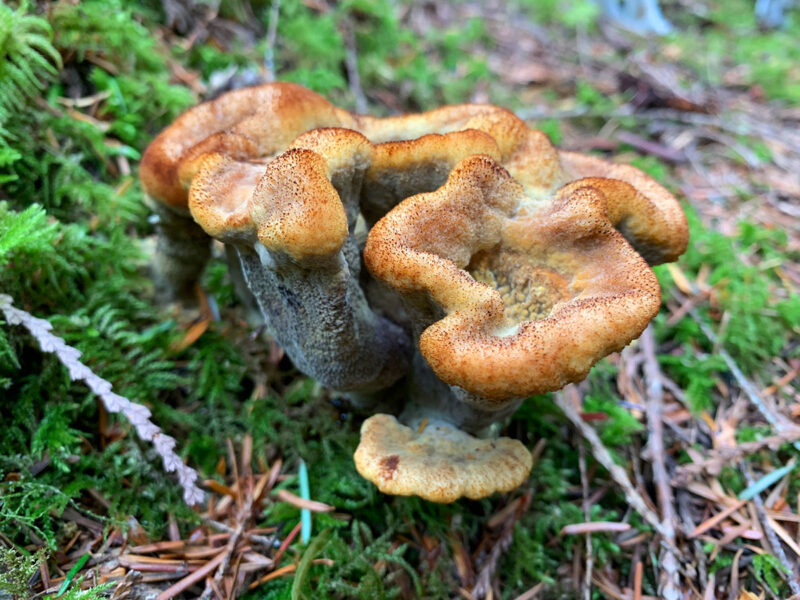
Besides being the best company a person could ever have on and off the forest trails, I love foraging with Balfour because we both love fungi. Doesn’t have to be edible or beautiful (which I realize is in the eyes of…) but we just love to explore and find mushrooms we haven’t seen before. That’s what foraging is for us: Getting out together with our dogs, roaming the forests, traipsing off trail to check on something we spotted, and finding a mushroom we didn’t know of before. Pure joy. And if we come home with a bagful for dinner – bonus.
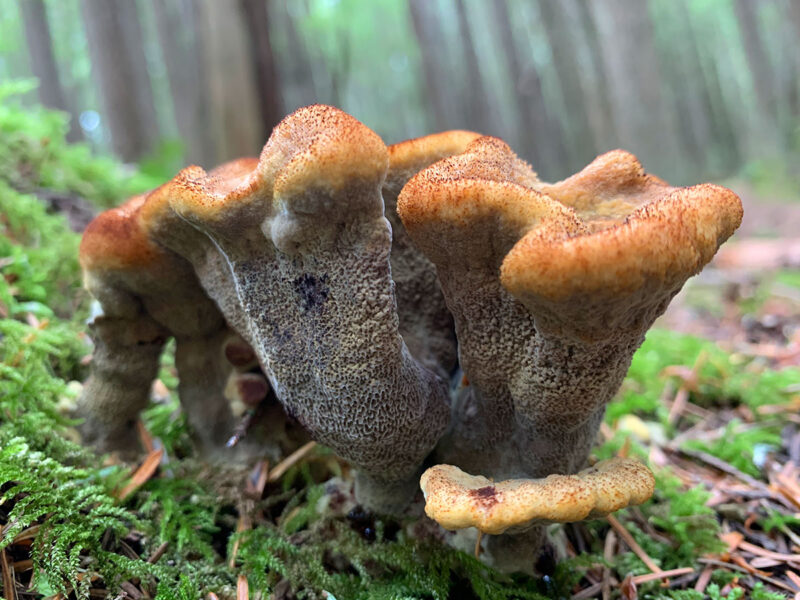
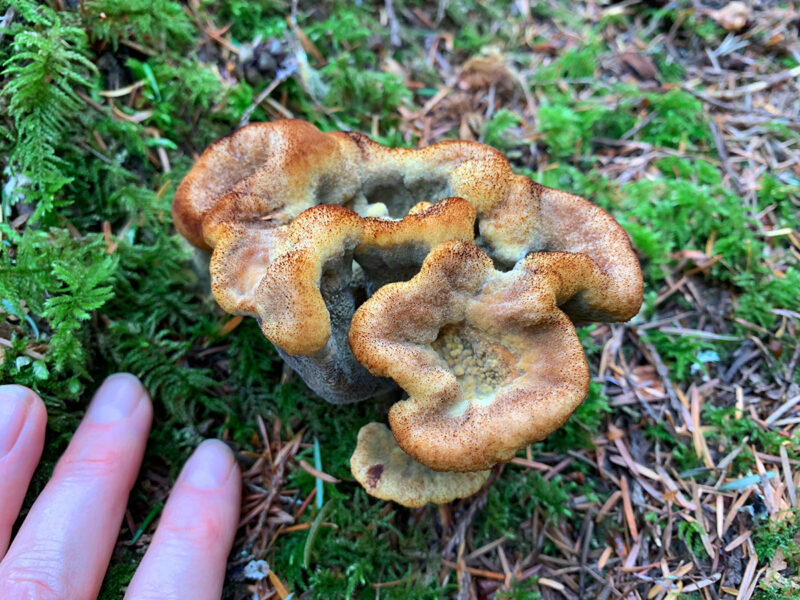
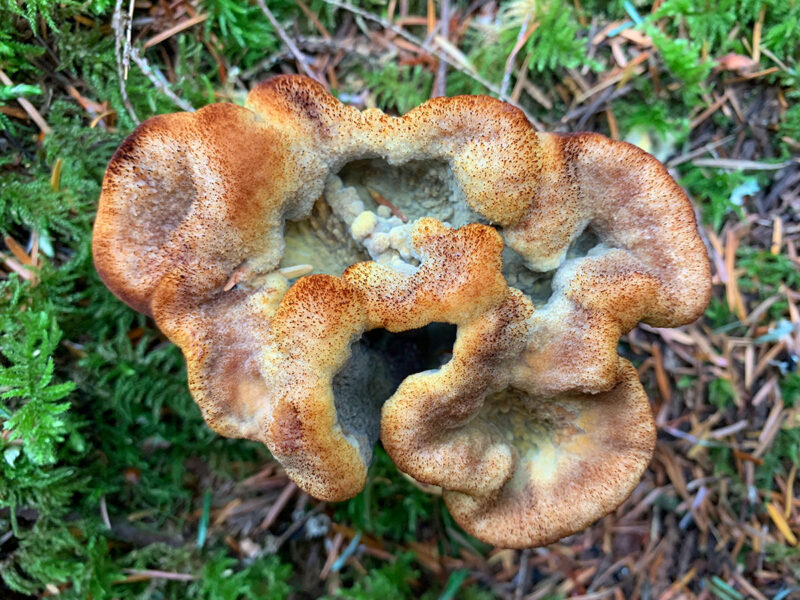
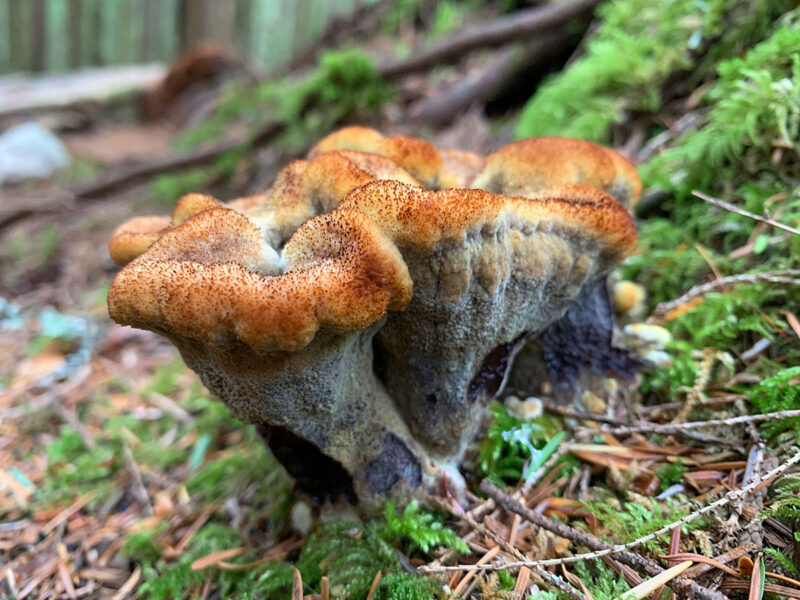
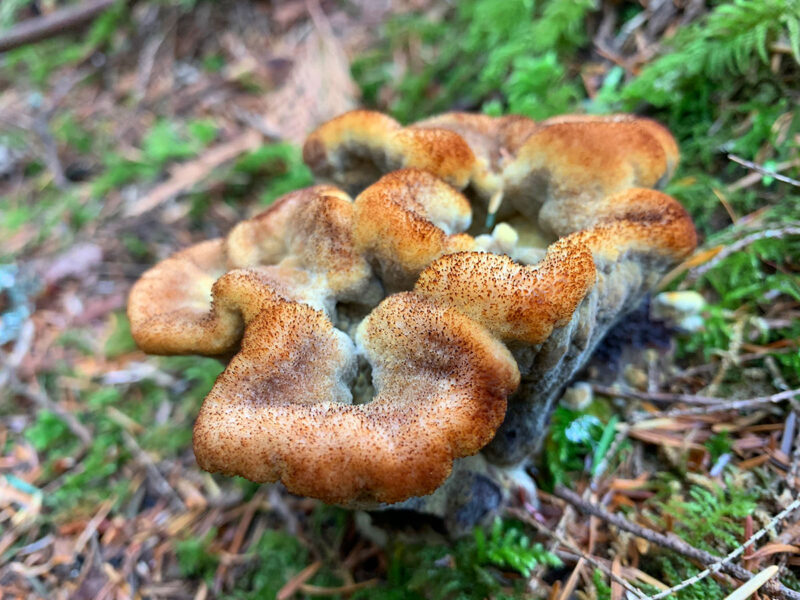
About the Phaeolus schweinitzii
A fungal plant pathogen that causes butt rot on conifers such as Douglas-fir, spruce, fir, hemlock, pine, and larch.[1] P. schweinitzii is a polypore, although unlike bracket fungi the fruiting body may appear terrestrial[citation needed] when growing from the roots or base of the host tree.[2]
The fruiting bodies, appearing in late summer or fall, commonly incorporate blades of grass, twigs, or fallen pine needles as they grow. They are tannish with darker brown centres, with orange to pale margins on young specimens. As the fruiting bodies age, the pore surface turns from yellow to greenish yellow, the top becomes darker, and the yellow-brown fleshbecomes harder and more wood-like. The pores bruise brown. The spores are white, elliptical, smooth, and inamyloid.
More information: Phaeolus schweinitzii: Wikipedia